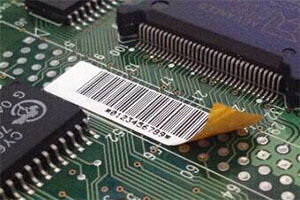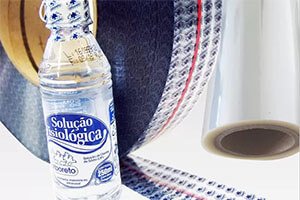How to Choose the Best Label Material for Your Product?
2022/02/26

When deciding what type of label to use for your product, there are many things that you should consider. What material will it be made out? How durable does the adhesive need to attach on its surface so as not easily removed or worn away by external factors like weathering over time. We’ll discuss all of these different types here and some tips on how to best choose them for your needs!
What Material Is Used for Labels?
The most common type of label material. It is made from a variety of materials, including coated paper, thermal transfer paper, or kraft paper. Paper labels offer a variety of colors, textures and weights that can be printed on using various printing methods including offset printing, digital printing, thermal transfer printing and screen printing. Paper labels are typically used for indoor applications but aren’t very durable and can tear easily.
Plastic labels are made of a variety of different materials, including PVC, Polyimide, Polyester, PP, and PE. Each type of material has its own unique properties that make it perfect in certain applications. When choosing the right material for your labels, you’ll need to consider the durability, resistance to moisture and heat, and chemical resistances. You’ll also need to decide whether you want a clear or opaque label. Ultimately, the best plastic label material for your needs will depend on the specific application and environment in which the labels will be used.
Vinyl:
Vinyl labels are made from PVC. It is durable and resistant to water, making it ideal for indoor and outdoor use. Vinyl label can be printed using any type of printer, including plotters, laser printers and label printers.
Polyimide:
Polyimide is a great option for harsh environments. It can withstand high temperatures, excellent chemical resistance, and dimensional stability. Polyimide labels are also very durable, making them ideal for applications where the label will be exposed to abrasion or repeated flexing.

PET:
PET is the most common label material used. It is a durable, clear and flexible label material that can be die-cut to any shape or size. Polyester materials are less expensive than polyimide and can also withstand high temperatures. It is also water resistant and has a high tear resistance, making them ideal for products that will be exposed to moisture or abrasion.
PVC:
PVC is another common label material, which is also clear and flexible. PVC labels are an excellent choice for products that need to be withstand harsh conditions or extreme temperatures. The material is less durable than polyester, but it’s resistant chemicals and heat.
Polypropylene (PP):
Polypropylene is one of the most versatile label materials available. It can be used for both indoor and outdoor applications, and it is durable enough to withstand harsh weather conditions. Polypropylene label material is also easy to print on, making it a popular choice for custom labels.
Polylactic Acid (PLA):
PLA label material is made from corn, a sustainable and renewable resource. PLA is also compostable, making it an excellent eco-friendly choice for your product labeling needs.
Releated Products: PLA Labels
Pros and Cons of Different Label Materials
| Label Materials | Pros | Cons |
|---|---|---|
| Paper |
Low cost, wide range of colors and textures, easy to print on
|
Not very durable, can tear easily
|
| Vinyl |
Durable, water resistant, can be printed on with any type of printer
|
Not eco-friendly
|
| Polyimide |
Can withstand high temperatures, chemically resistant, durable
|
More expensive than other label materials
|
| PET |
Durable, clear, flexible, less expensive than polyimide
|
Less chemically resistant than polyimide
|
| PVC |
Clear, flexible, less expensive than Polyester, chemically resistant
|
Less durable than Polyester
|
| Polypropylene (PP) |
Versatile, can be used for indoor and outdoor applications, durable, easy to print on
|
Not eco-friendly, can be more expensive than other label materials
|
| Polylactic Acid (PLA) |
PLA is derived from renewable resources like cornstarch, starch, or sugarcane. It's also biodegradable, so it's a more sustainable choice than traditional plastics.
|
PLA is not as durable as other plastic materials and can be more expensive.
|
Comparison of Different Label Materials
| Label Materials | Weight/Thickness | Printability | Moisture Resistance | Heat Resistance |
|---|---|---|---|---|
| Coated Paper | 80/160 g/m2 | ★★★ | ★ | ★★ |
| Direct Thermal Paper | 76 g/m2 | ★★★ | ★ | ★ |
| Thermal Transfer Paper | 80 g/m2 | ★★★ | ★ | ★★ |
| Kraft Paper | 80 g/m2 | ★★★ | ★ | ★★ |
| PVC | 40~150 μm | ★★★ | ★★★ | ★★ |
| Polyimide | 12~50 μm | ★★ | ★★★ | ★★★ |
| Polyester | 12~188 μm | ★★ | ★★★ | ★★★ |
| Polypropylene (PP) | 23~60 μm | ★★ | ★★ | ★★★ |
★★★ Excellent, ★★ Good, ★Avegare
What Adhesive Is Used for Labels?
The pressure sensitive adhesive is the part of the label that actually sticks to the surface you’re labeling. There are different types of adhesives, and each has advantages and disadvantages. You’ll need to decide which type of adhesive is best for your needs.
This is a strong, permanent adhesive that is often used for outdoor applications. It can withstand extreme temperatures and weather conditions.
This is a softer adhesive that is often used for indoor applications. It has a strong bond and can be removed without damaging surfaces.
This is a non-sticky and removable adhesive that is often used for temporary applications. It can be easily removed without leaving any residue.
How to Choose The Best Label Material?
Paper
There are many factors to consider when choosing the best label material for your product. The first step is to determine what the labels will be used for. Will they be exposed to harsh weather conditions, such as extreme temperatures or sunlight? Or will they simply be used indoors on packaging? Once you know how and where your labels will be used, you can narrow down your choices.
Paper labels are a popular choice for many products, as they are durable and versatile. However, there are different types of paper label materials to choose from, such as semi gloss paper, high gloss paper or matte finish. Each type has its own advantages and disadvantages, so it’s important to select the right one for your needs.
If you’re looking for stylish and durable labels, glossy paper labels are a great option. They resist tearing and damage from water and sunlight, making them ideal for products that will be exposed to the elements. However, glossy labels can be difficult to write on, so they’re not always the best choice for labeling purposes.
Plastic
The type of plastic material you choose for your product label will have a big impact on both the look and feel of your product, as well as its durability. There are many different types of plastics to choose from, so it’s important to do your research before making a final decision. Here are a few things to keep in mind when choosing the right plastic label material for your product:
- The type of product you are labeling.
- The environment in which the product will be used.
- The durability and lifespan of the label.
- Your budget.
Adhesive
When selecting an adhesive, you should consider.
- What type of surface the label will be applied to?
- Whether the label will be exposed to extreme? temperatures or weather conditions
- How long you need the label to last?
- If you need to be able to remove the label without damaging the surface or leaving residue behind.
If you’re not sure which labels to choose, ask us for samples of each type so you can test them out. Once you’ve decided on the right label material, you’ll be one step closer to creating perfect labels for your products!
Category

